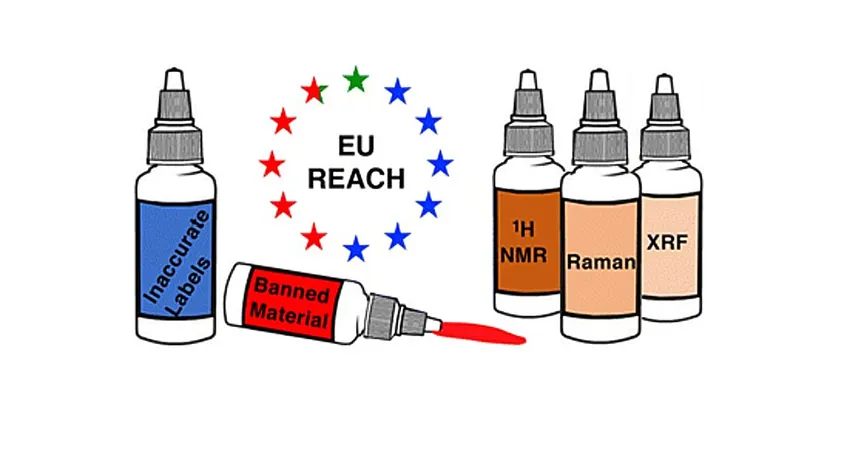
Shocking Revelation: Most Tattoo Inks in Europe Contain Hidden Dangers!
2024-10-01
Author: Wei Ling
Shocking Revelation: Most Tattoo Inks in Europe Contain Hidden Dangers!
If you're considering getting a tattoo, you might want to think twice. A groundbreaking study conducted by researchers at Binghamton University, State University of New York, has uncovered alarming truths about green and blue tattoo inks sold in Europe. Most of these inks not only contain unlisted ingredients but some are laced with substances that are officially banned!
Published in the prestigious journal The Analyst, the study shines a light on the dark side of tattoo ink safety. Despite the European Union's stringent REACH (Registration, Evaluation, Authorization, and Restriction of Chemicals) regulations, which impose strict limits on around 4,000 chemicals, compliance is shockingly low. Some notorious offenders, including Pigment Blue 15:3 and Pigment Green 8, are completely banned from use in ink formulations.
Led by chemist John Swierk, the research team meticulously analyzed ten green and blue inks from five different manufacturers claiming to be compliant with REACH regulations. This follows their earlier study in the United States, which revealed that a staggering 83% of tested inks failed to match their ingredient labels.
Swierk remarked, "While we can't definitively assess the safety of tattoos, our findings prompt serious questions about just how safe they might be. Without transparency regarding these inks, we can't identify what might trigger adverse reactions—be it an allergy or something more severe."
Using advanced Raman spectroscopy, a common method for pigment identification in the art sector, the study yielded shocking results. Nearly 90% of the tattoo inks tested were found to be noncompliant with the REACH regulations. In four instances, the inks contained materials that are flat-out prohibited!
Swierk emphasized that the existing laws are not being enforced effectively, which raises concerns—are the violations accidental or intentional? He pointed out, "The regulatory landscape must evolve. If the current laws cannot be enforced, particularly regarding substances like Pigment Blue 15, they need urgent reevaluation."
Alarmingly, the study found that the techniques used to determine which variant of Pigment Blue 15 is present are unreliable. With multiple structures available, pinpointing which one complies with regulations is nearly impossible for manufacturers. This hints at a potential loophole that could allow harmful substances to slip through the cracks.
Ongoing research by Swierk’s team aims to delve deeper into tattoo inks, particularly how pigments respond to light and how tattoos are effectively implanted into the skin. "We are also investigating how tattoo pigments break down, especially under specific laser lights used for tattoo removal," added Swierk.
The implications of this study are profound, both for tattoo enthusiasts and professionals in the tattooing industry. As awareness grows, will there be a call for greater scrutiny and safer regulations for tattoo inks? Stay tuned for more revelations on this pressing health issue!

 Brasil (PT)
Brasil (PT)
 Canada (EN)
Canada (EN)
 Chile (ES)
Chile (ES)
 España (ES)
España (ES)
 France (FR)
France (FR)
 Hong Kong (EN)
Hong Kong (EN)
 Italia (IT)
Italia (IT)
 日本 (JA)
日本 (JA)
 Magyarország (HU)
Magyarország (HU)
 Norge (NO)
Norge (NO)
 Polska (PL)
Polska (PL)
 Schweiz (DE)
Schweiz (DE)
 Singapore (EN)
Singapore (EN)
 Sverige (SV)
Sverige (SV)
 Suomi (FI)
Suomi (FI)
 Türkiye (TR)
Türkiye (TR)